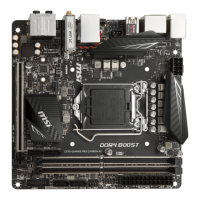
Do you have a question about the MSI Z370I GAMING PRO CARBON AC and is the answer not in the manual?
| Brand | MSI |
|---|---|
| Model | Z370I GAMING PRO CARBON AC |
| Category | Motherboard |
| Language | English |
Lists all items included in the motherboard box for user verification.
Essential safety guidelines for handling components and ensuring safe system assembly.
Lists the necessary tools and hardware components for building a PC.
Step-by-step instructions for correctly installing the CPU onto the motherboard socket.
Detailed guide on how to properly insert DDR4 memory modules into the motherboard slots.
Instructions for connecting the front panel header cables for power, reset, and LEDs.
Steps to securely install the motherboard inside the computer chassis.
Guide on connecting SATA drives, including data and power cables.
Instructions for inserting and securing a graphics card into the PCIe slot.
How to connect external devices like keyboard, mouse, and display to the rear I/O panel.
Guide for connecting the main ATX power supply cables to the motherboard.
Steps to safely power on the computer for the first time after assembly.
Details on CPU, Chipset, Memory, Expansion Slots, Graphics, Storage, Audio, and LAN.
Information on Wireless LAN, Bluetooth, USB ports, and back panel connectors.
Details on internal connectors, I/O controller, hardware monitor, and motherboard form factor.
Overview of supported software utilities and special motherboard features.
Further details on special features like storage, LED control, protection, performance, and gamer experience.
Visual representation of how different motherboard components and interfaces are connected.
Description of the rear input/output ports, including LAN status and audio configuration.
Guide to configuring audio settings using the Realtek HD Audio Manager software.
Top and bottom views identifying key motherboard components and connectors.
A table listing component names, types, and corresponding page numbers for detailed information.
Instructions for installing an M.2 module into the M2_1 slot, including important notes.
Guide on installing the CPU, including socket orientation and heatsink mounting.
Information on installing DDR4 memory modules in DIMM slots, including slot priority.
Details on the M.2 slot used for installing the Wi-Fi module.
Guide for installing expansion cards, including important considerations for heavy cards.
Information on connecting SATA devices using the SATA 6Gb/s ports.
Instructions for connecting the main ATX and CPU power connectors.
Pinout details for connecting front panel switches and LEDs to the motherboard.
Guide for connecting USB 2.0 ports to the motherboard header.
Guide for connecting USB 3.1 Gen1 ports to the motherboard header.
Information on PWM and DC fan connectors, including pin definitions and mode selection.
Pinout for connecting the front panel audio jacks to the motherboard.
How to connect and configure the chassis intrusion switch for security alerts.
Details on the TPM connector for Trusted Platform Module installation.
Instructions on how to reset BIOS settings to default using the JBAT1 jumper.
Information on connecting RGB LED strips and fans for lighting effects.
Explanation of EZ Debug LEDs, DIMM LEDs, and PCIe x16 slot LED status.
Methods to access the BIOS setup utility during system boot.
How to reset BIOS settings and update the BIOS firmware using M-FLASH or Live Update 6.
Explanation of the EZ Mode interface for basic system information and settings.
Explanation of the Advanced Mode interface for detailed system configuration.
Details on system date, time, SATA ports, system information, and DMI information.
Configuration options for PEG Link Speed, PCI Latency, ACPI, and integrated peripherals like LAN.
Settings for integrated graphics, multi-monitor output, and USB controller functions.
Settings for legacy USB support, power management, and Windows OS configuration.
Configuration options for Fast Boot, Secure Boot, Key Management, and Wake Up Events.
Settings for system wake-up events, RTC alarms, and boot device order.
Options for setting administrator and user passwords, password checks, and trusted computing.
Options for saving or discarding changes and exiting the BIOS setup utility.
Introduction to overclocking features, including OC Explore Mode and CPU Ratio.
Settings for EIST, Turbo Boost, and Extreme Memory Profile (XMP) for performance optimization.
Configuration for advanced DRAM timings and digital power controls for the CPU.
Settings related to CPU specifications, technology support, Hyper-Threading, and core selection.
Configuration for Intel VT-D, prefetchers, AES instructions, thermal monitor, and C-states.
Settings for CPU power limits, frequency, and DMI link speed for performance tuning.
Step-by-step guide for updating the motherboard BIOS using a USB flash drive via M-FLASH.
Options for creating, saving, loading, and clearing overclocking profiles.
Interface for monitoring system temperatures, fan speeds, and voltages, with fan control options.
Instructions for installing Windows, drivers, and system utilities from the provided disc.
Introduction to the MSI App Manager for managing MSI software and applications.
Guide to using Live Update 6 for automatic driver, BIOS, and utility updates.
Overview of Command Center for adjusting system settings and monitoring hardware status.
Feature to apply a specified CPU frequency for overclocking and improved gaming performance.
Application for quick system control to improve gaming performance, including OC, Gaming, and Silent modes.
Feature to optimize system performance for Virtual Reality (VR) readiness.
Allows instant system control through user-defined hotkeys for various functions.
Utility for customizing mouse DPI settings and creating macro functions.
Select system performance modes to meet current environment or speed up storage access.
Application for controlling LED lights of MSI products, synchronizing devices and effects.
Utility to create Windows installation USB flash drives and software RAID arrays.
Utility to create and manage software RAID volumes within the Windows system.
Utility to create a virtual RAM drive for faster storage access and temporary data.
Utility for traffic shaping, optimizing internet speed, and managing network bandwidth.
Feature to watch game guides, tutorials, and live streams while gaming, with hotkey controls.
Software for enhancing audio experience with effects, profiles, and microphone settings.
Platform for managing SteelSeries device settings and creating custom configurations.
Software for tuning, testing, and monitoring system performance and overclocking.
Utility to gather and display detailed information about the system's CPU, mainboard, and memory.
Application to play PC games in 3D inside a VR headset for an immersive experience.
Tool to replace or blur backgrounds in video chat applications or remove backgrounds in XSplit.
Explanation of RAID levels (0, 1, 5, 10) and how to set up RAID using Intel RST Option ROM.
Step-by-step guide on creating RAID volumes, selecting disks, strip size, and capacity.
Procedures for removing RAID volumes and resetting disks from RAID to non-RAID configurations.
Options for recovery volume settings and procedures for handling degraded RAID arrays.
Steps for replacing a failed hard drive and rebuilding the RAID array.
Requirements and steps for installing and configuring Intel Optane Memory on the motherboard.
Guide on enabling Intel Optane Memory through the system BIOS and application.
Steps to safely disable and remove Intel Optane Memory to avoid operating system damage.
Solutions for problems related to disabling Optane Memory and switching SATA modes.
Solutions for power, display, boot, audio, network, and USB device problems.
Statements regarding FCC, CE, C-Tick, Battery, Chemical, Environmental, and WEEE compliance.
Information on regional compliance (India, Turkey, Ukraine, Vietnam, Taiwan) and wireless radio restrictions.
Details on document copyright, trademark recognition, and technical support resources.
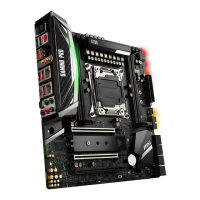
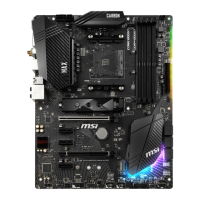
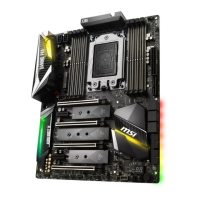

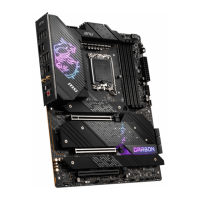
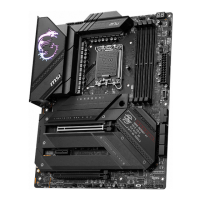
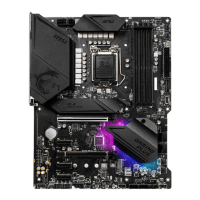
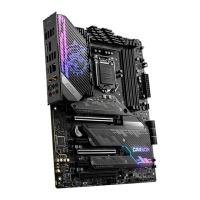
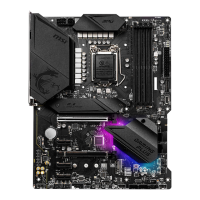
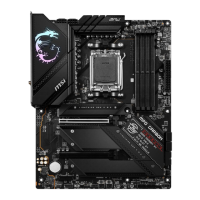
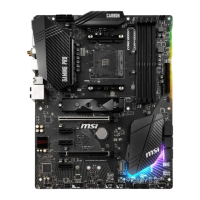
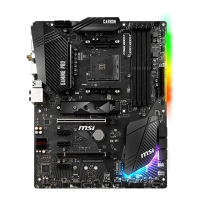
